Read the Stories
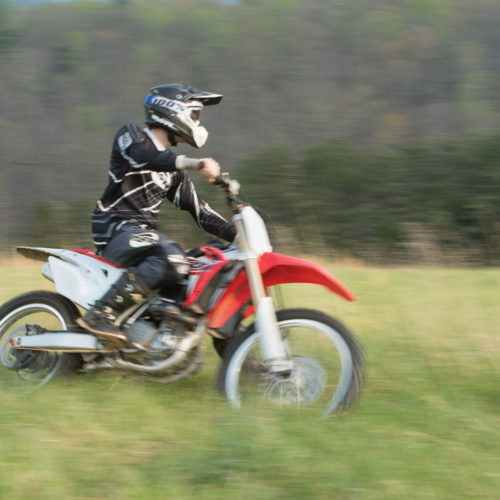
Procedure: Hand Surgery
Primary Physician: Dr. Hoover
Facility: Sentara Martha Jefferson
It was Saturday and I was in my happy place, weaving through the backwoods of Afton Mountain, when my dirt bike bounced down into a dry creek bed marred by deep ditches and slopes. I dropped off on one side of the path and tried to get the front wheel up, but instead I lost control. I fell off the bike sideways at about 20-30 miles per hour, and I put my arm out to break my fall.In doing so, I broke two bones in his wrist and tore the labrum tissue surrounding my shoulder joint.
Seeing the X-rays in the Emergency Department (ED) at Sentara Martha Jefferson, I knew I was in trouble. You don’t realize all the simple things you do in life that you really need both hands for—like tying your shoes, buttoning your shirt and brushing your teeth—until you can’t use them. And, of course, I knew that for a while I wouldn’t be able to do the things I really enjoy, like riding my bike, lifting weights and playing football. I also knew it would affect my full-time work as a project manager for a local homebuilder, which involves a lot of typing and sometimes requires me to step in and help out at construction sites.
Though the ED doctors were confident that my shoulder injury would heal on its own, the fractures in the wrist would likely require surgery. I was immediately referred to Dr. Hoover, who told me it was a violent break, but he was confident that he could get me back to 90-100 percent mobility.
I felt pretty good after my evaluation with Dr. Hoover and was eager to get on with the surgery. As I was getting prepped for surgery, the anesthesiologist told me that Dr. Hoover had done her hand surgery, so I was pretty confident that everything was going to be OK.
The surgery involved fixing my scaphoid with a screw and piecing the radius back together with a screw and plate. I was then fitted with a hard cast and some additional soft bandaging and sent home.
The cast kept my hand immobile for about a week. Dr. Hoover recommended physical therapy to ensure a speedy recovery and, within three weeks, I was able to do most of my normal activities again.
Several months after my initial surgery, I elected to have my plate removed to avoid any future issues. Dr. Hoover recommended that I go ahead and have the second surgery because I was so young and active, and because I had healed so quickly from the first injury. That healed up quickly as well, and there was absolutely no pain. It was incredible.
Today, I’m happy to report I’m back to my regular life of lifting weights, playing football and racing my dirt bike out in the woods. While I can’t promise that I’ll always be completely careful on the bike, one thing is certain: If this kind of thing ever happens again, I’m definitely going back to Dr. Hoover and Sentara Martha Jefferson Orthopedics.
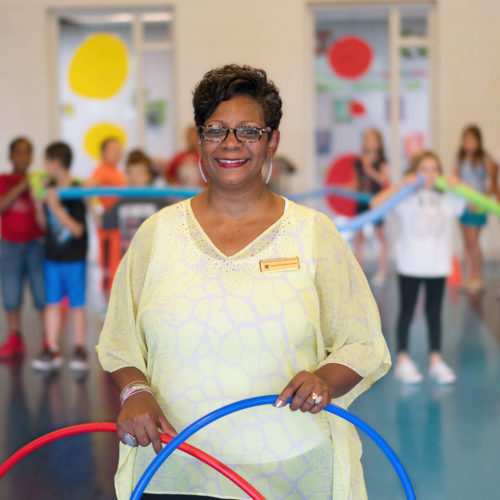
Procedure: Knee Surgery
Primary Physician: Dr. Edwards
Facility: Sentara Martha Jefferson
As a school principal, I’m always on the move and strive to be fully engaged with my faculty and students. But during the past few years, severe arthritis pain in both knees made walking difficult, causing me to spend more and more of my working hours in the school office. Though steroid injections in the knees helped for a while, those treatments eventually became ineffective. Over time, my gait began to change, and soon I couldn’t even straighten my knees.
My job is demanding, and it took everything I had to be at work each day. I wanted to be able to visit the classrooms and walk in the hallways greeting students, but the pain in my knees made that difficult. It totally consumed my life, and I was feeling ineffective as a principal.
Arthritis runs in my family. I remember my grandmother having such a severe case of arthritis that she eventually needed a wheelchair to get around. I wanted to be able to walk into my golden years, so I knew I needed to do something about my knees.
My family doctor referred me to John Edwards, MD, an orthopedic surgeon with Sentara Martha Jefferson Orthopedics. In March, Dr. Edwards performed joint replacement surgery on both of my knees at the same time.
Most surgeons don’t do both knee replacements at the same time, but Dr. Edwards said I was very healthy otherwise and had been successful in losing weight before my surgery. These factors, in addition to having a good support system at home, made me a good candidate for having both joints done at once.
So far, I have been incredibly happy with the results of the procedure. I’m now able to ride m exercise bike and spend time with students on the playground during recess, and I’ve even returned to singing in her church choir.
Everyone at Sentara Martha Jefferson was so caring, and I’m so glad I had this surgery. This procedure has completely changed my life. It’s honestly like night and day. People tell me how much better I’m able to walk now. I tell them it’s thanks to the good Lord and to the best surgeon in the world, Dr. John Edwards. I’m pain-free and very thankful. It’s a whole new life for me.
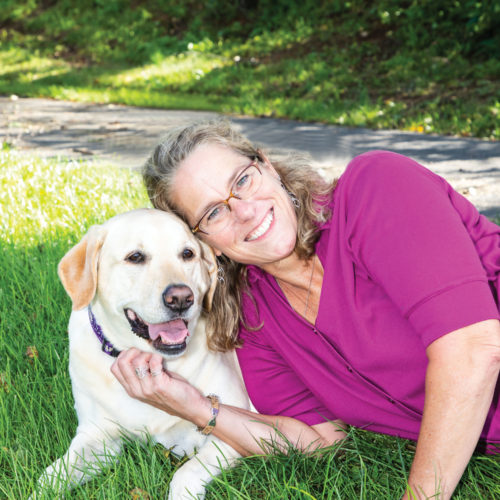
Procedure: Knee Surgery
Facility: Sentara RMH
Until just about a year ago, I had spent most of my life in pain. Seemingly simple everyday motions like standing up or walking down a flight of stairs were a struggle. When I was 12 (I’m now 52), I tore the anterior cruciate ligament (ACL) in my left knee while playing soccer, and then tore my other ACL just one year later. Over the years, the pain became nearly constant, affecting almost every facet of my life, and throughout that time I’d been unable to find relief—until I went to Sentara RMH.
These days, patients almost always have surgery to repair a torn ACL, but several decades ago I used a combination of physical therapy and strengthening exercises in an attempt to rehabilitate my knees. When those techniques didn’t work, I underwent separate ACL surgical repairs at ages 17 and 18.
Unfortunately, the procedures didn’t provide the solution I had hoped for. I developed arthritis in my knees and had to wear knee braces when participating in sports and other strenuous activities, and the pain grew progressively worse. Traveling for my job as a salesperson was an endurance test. And although I’m an avid music fan, I could no longer attend concerts, since they required too much standing.
I had gotten to the point in my life where being on my feet for 30 seconds was painful and standing up after being seated was absolutely excruciating. I tried to compensate for the pain with large doses of ibuprofen, but I worried about what the medication might be doing to my body.
I just stopped living in a lot of ways. I felt like my world had come to a screeching halt because of my knee pain. I knew that if I wanted to lead a normal life, doing nothing about the problem was no longer an option. In talking with sports medicine physician Thomas Weber, MD, of Sentara Orthopedic & Sports Medicine Specialists in Harrisonburg, I learned I needed total knee replacements to help eliminate the pain.
Dr. Weber started the conversation about next steps. He was an integral part of my care leading up to surgery. To help move my treatment plan forward, Dr. Weber recommended that I see a Sentara RMH orthopedic surgeon.
I was so impressed with my doctor. He was honest, upfront and kind. He made it very clear what my risks were, and that the recovery process was going to be extremely difficult.
I decided I wanted to have a bilateral knee replacement, meaning I would have both knees replaced at the same time—a less common surgical option for patients, according to my doctor.
My doctor agreed that a bilateral replacement was the best option for me, as operating on one knee and leaving the other would have actually inhibited my rehab. I knew I needed to get my body ready for surgery and recovery, so I began exercising before I even met with my doctor for the first time.
Thanks to my persistence, I eventually lost 30 pounds. I also benefited from the Sentara RMH team’s preoperative joint education class, where patients learn what to expect during and after surgery. The class covers everything from the preoperative to postoperative aspects of patients’ joint surgery, including preparing the home environment for their return from the hospital, making other discharge plans, learning about equipment such as walkers they will need in their home, and getting their muscles in shape for the recovery process.
Sentara RMH does a really good job of preparing you for what you’re facing. They’re obviously very focused on making this a successful program for their patients and ensuring they have as much knowledge and preparation as possible.
Having both knees replaced at one time is challenging, and I won’t sugarcoat the recovery process. You have to learn how to bend and straighten your leg all over again, and your body doesn’t want to do it because there’s so much swelling in there. I used a walker to get around during my recovery, since I couldn’t rely on either leg.
There were three or four days of inpatient physical therapy that were probably the most difficult of my life, but the physical therapists were just fantastic. They knew just how to work with me for the best outcome.
When I left the hospital, I continued with outpatient physical therapy, and the pain eventually went away after several months of perseverance. All the effort was totally worth it. Once you’re out of that pain zone, it’s amazing. The impact was tremendous—just losing the mental stress and no longer having that looming over me! There’s lightness in the fact that I know I can hop up out of my seat to answer the door or pick up the phone. And now I can trust my knees to go down steps. I used to take one step at a time, but I don’t even think about it now.
Five months after surgery, I traveled to London to visit one of my daughters who was studying abroad. My new knees took me up the more than 1,000 steps to the top of St. Paul’s Cathedral, for breathtaking views of the city skyline. I have also attended—and remained standing for—three Dave Matthews Band concerts since my surgery.
Knee replacements last an average of 15-30 years, so my doctor says there’s a chance I will need surgery again when I’m older—but I’m more than willing to go down that path, if needed.
My doctor is obviously an excellent surgeon. He and his staff were wonderful. They’re a very good team, and they work well together. I really felt like I got great care at Sentara RMH.
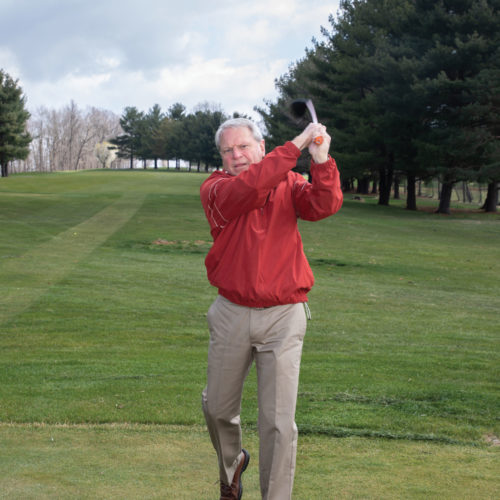
Procedure: Shoulder Surgery
Facility: Sentara RMH
I was honestly in so much pain that I couldn’t sleep at night. During the day it was difficult for me to find a comfortable sitting position. Lifting the lightest of objects could be agonizing. Even something as simple as reaching out and flipping the turn signal of my car was a tormenting—often impossible—task.
And all the frustrating problems I was experiencing were due to a problem with my left shoulder.
I’m a semi-retired architect from Keezletown, who had always been active, finding hours of enjoyment in playing golf and racquetball. But the agonizing pain in my shoulder had made many of my activities unbearable. In hopes of addressing the issue, I consulted with an orthopedic sports medicine surgeon with Sentara Orthopedic and Sports Medicine Specialists.
At first, we treated the shoulder with a cortisone shot, which relieved the pain for a few months. But the pain would always come back (usually with a vengeance) and a second cortisone shot didn’t help. My shoulder was killing me. It became obvious that simply managing the pain wasn’t an option—I had to have surgery.
I think it’s natural for everyone to have at least a little apprehension about surgery, but my experience at Sentara RMH was better than I thought possible. Everything about the surgical process was painless, or very nearly so. Before surgery, the anesthesiologist gave me a ‘nerve block,’ which was an injection that numbed the pain in my shoulder. That didn’t hurt. Of course, I don’t remember anything about the surgery itself. I woke up and went home wearing a sling, with a pillow between my body and my arm.
During the procedure, my surgeon removed several bone spurs, scraped away calcium that had built up around my tendons, removed a cyst and repaired a 15-year-old rotator cuff tear.
I took pain medication for three days and ibuprofen for one day. After that, I didn’t need to take anything at all. I was essentially pain-free from the time I came out of surgery.
As for the shoulder condition that had been giving me so much trouble, that pain was gone, too!
It was amazing. And the only evidence that I’ve had any surgery at all are seven small incision marks, each about the size of the tip of a drinking straw. Today, after having gone through postoperative physical therapy, I have 100 percent usage of my shoulder. I can do everything I used to do, including playing golf and racquetball. I’m incredibly grateful to my surgeon and the entire staff at Sentara RMH.
According to my doctor, the obvious advantage of arthroscopy over traditional shoulder surgery is that the joint doesn’t have to be opened up fully. This less invasive method, he says, is known for reducing recovery time and increasing the overall surgical success rate, since the procedure involves less trauma to the connective tissue within the shoulder. There is a cosmetic advantage as well, since there is far less scarring with arthroscopy than with traditional surgery.
I’m a semi-retired architect from Keezletown, who had always been active, finding hours of enjoyment in playing golf and racquetball. But the agonizing pain in my shoulder had made many of my activities unbearable. In hopes of addressing the issue, I consulted Dr. Chad J. Muxlow, an orthopedic sports medicine surgeon with Sentara Orthopedic and Sports Medicine Specialists.
At first, we treated the shoulder with a cortisone shot, which relieved the pain for a few months. But the pain would always come back (usually with a vengeance) and a second cortisone shot didn’t help. My shoulder was killing me. It became obvious that simply managing the pain wasn’t an option—I had to have surgery.
I think it’s natural for everyone to have at least a little apprehension about surgery, but my experience at Sentara RMH was better than I thought possible. Everything about the surgical process was painless, or very nearly so. Before surgery, the anesthesiologist gave me a ‘nerve block,’ which was an injection that numbed the pain in my shoulder. That didn’t hurt. Of course, I don’t remember anything about the surgery itself. I woke up and went home wearing a sling, with a pillow between my body and my arm.
During the procedure, Dr. Muxlow removed several bone spurs, scraped away calcium that had built up around my tendons, removed a cyst and repaired a 15-year-old rotator cuff tear.
I took pain medication for three days and ibuprofen for one day. After that, I didn’t need to take anything at all. I was essentially pain-free from the time I came out of surgery.
As for the shoulder condition that had been giving me so much trouble, that pain was gone, too!
It was amazing. And the only evidence that I’ve had any surgery at all are seven small incision marks, each about the size of the tip of a drinking straw. Today, after having gone through postoperative physical therapy, I have 100 percent usage of my shoulder. I can do everything I used to do, including playing golf and racquetball. I’m incredibly grateful to Dr. Muxlow and the entire staff at Sentara RMH.
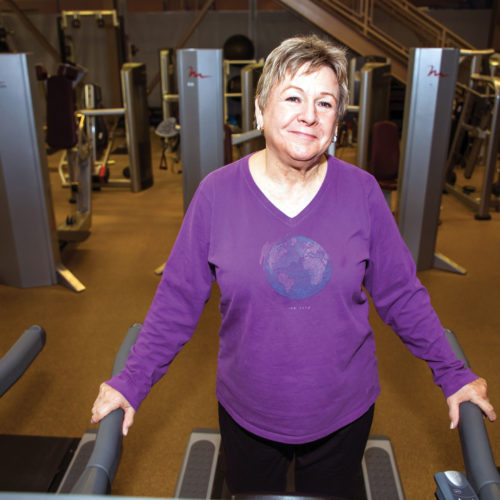
Procedure: Foot Surgery
Facility: Sentara RMH
I’m someone who’s always understood the importance of taking good care of myself. Over the years, I’ve led an active lifestyle that included a membership at the Sentara RMH Wellness Center, where I took up various types of exercise, individually and in group settings. But in January 2017, all of that got put on hold when a serious accident compromised my ability to move easily.
It was Jan. 11, a Wednesday evening, and I was working out in a Pilates class with my trainer and two other class members. Suddenly (and embarrassingly), I fell off my Pilates chair.
I’ve been doing Pilates for several years, so I was familiar with what I was doing, but I still don’t know how it happened. Suddenly I was on the floor in tremendous pain.
The staff called an ambulance, and I was taken to the Sentara RMH Emergency Department, where I was assessed and given an intravenous line and pain medication. X-rays revealed that I had fractures in both bones of my right forearm, several broken bones in my right foot, and a shattered heel bone in my left foot.
The orthopedic physician on call that evening was Robert Kime III, MD, of Hess Orthopaedic Center & Sports Medicine in Harrisonburg. Dr. Kime saw me in the hospital, where I’d been admitted, and began treating my injuries, starting with the arm. He informed me it was a pretty serious break, and he would have to use a splint rather than a regular cast due to the surrounding swelling.
About a week later, after the swelling had gone down, he put a regular cast on my arm.
My arm wasn’t the only area where swelling was a problem, however. Swelling in my feet prevented those injuries from being treated upon my arrival at the hospital, so I was sent to a skilled nursing facility in town to wait for the swelling to subside.
Several days later, I met with Chad Moorman, DPM, a podiatric (foot and ankle) surgeon at Hess Orthopaedics. Since the fractures in the midportion of my right foot were still aligned properly, a boot was all that was necessary to keep me from further injuring that foot while the fractures healed. My left foot with the shattered heel bone, however, was a different matter, and surgery was scheduled at Sentara RMH for Friday, Jan. 27, to correct that issue.
Dr. Moorman essentially had to rebuild my heel. The procedure required the insertion of a stainless steel plate and 11 screws into my heel to hold things together. I also received donor bone to help restore the anatomy of the crushed heel.
I was discharged from the hospital that Sunday, Jan. 29, and then went to stay with a friend who happens to be a nurse, and who has an apartment in her home that would make it easier for me to get out to my follow-up appointments.
I stayed with my friend for more than a month while I healed. I kept the boot on my right foot for about eight weeks, and I had a soft cast on my left heel, which Dr. Moorman changed every week while the incisions healed. In the meantime, another friend built a ramp at my home so they could drive a golf cart to my door, which helped me get around with less walking.
I kept the cast on my left foot for four months and then wore a tall boot after the cast was removed. I was only able to begin putting increased weight on the reconstructed heel gradually—starting with just 25 percent of my body weight and then increasing the amount until I could bear 100 percent of my weight.
Today, more than a year after my mishap, I still have challenges with my feet, but I continue to improve.
Dr. Moorman told me at the outset that it could easily take up to a year and a half for me to heal fully. I haven’t been able to go on long walks, and I’ve been warned not to do anything with my feet involving pounding or absorbing impact.
I have to be very careful to avoid falling again. But Dr. Moorman says once I fully heal, I should be able to do low-impact aerobic activities like walking, bicycling or swimming, but probably not jogging, running, or faster-paced sports like tennis or basketball.
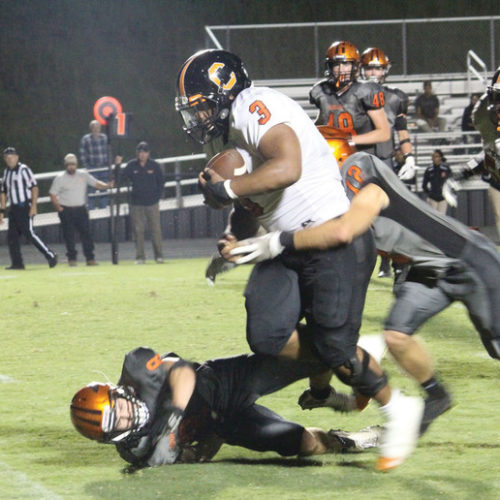
Procedure: Knee Surgery
Primary Physician: Dr. Panzarella
Facility: Sentara Martha Jefferson
In July of 2017, I was a rising junior at Charlottesville High School (CHS) and preparing to enter what would undoubtedly be the most important season of my high school football career. But it all came to a screeching halt when I tore my meniscus during drills, just a week before camp.
Fearing my season was in jeopardy, I turned to the CHS team doctor, Matthew Panzarella, who is also an orthopedic surgeon and sports medicine specialist at Sentara Martha Jefferson Orthopedics.
Dr. Panzarella informed me I would need surgery to repair the meniscus, the small segment of cartilage that pads the space between the femur (thighbone) and tibia (shinbone). After a careful review of my condition, the decision was made to delay surgery so that I could play through the season, and Dr. Panzarella ordered a specialized brace that would take some of the force off my torn meniscus. In addition to wearing the brace, I worked with an athletic trainer to strengthen the muscles around the knee.
Under Dr. Panzarella’s care, I was able push through the torn meniscus for my best season yet! I was selected as a first-team Jefferson District and second-team all-region pick, rushed for more than 1,200 yards, and scored 27 touchdowns.
Following the season, Dr. Panzarella performed the meniscus repair procedure on my knee in early December. The surgery went well, and I missed only a few days of school. I then started physical therapy in early January and, soon after, was even able to start light workouts with my team.
Everyone at Sentara Martha Jefferson was wonderful throughout the entire process and I’m eternally grateful to Dr. Panzarella and his team.
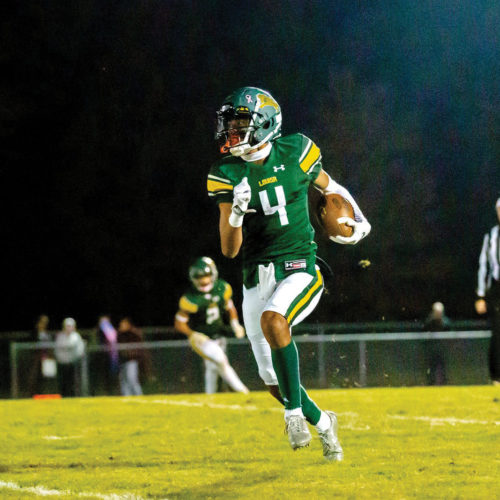
Procedure: Knee Surgery
Primary Physician: Dr. Baumbusch
Facility: Sentara Martha Jefferson
During my junior year at Louisa County High School, I injured my right knee in off-season training. X-rays confirmed I had torn my lateral meniscus, which the doctor explained is a band of cartilage that cushions and stabilizes the knee.
I saw Dr. Clark Baumbusch, an orthopedic surgeon at Sentara Martha Jefferson Hospital. He explained that the standard way to treat my injury would be to remove the damaged cartilage, which could cause long-term damage to my knee. But he said he was going to use a newer procedure, a partial lateral meniscectomy, that could preserve the meniscus and its cushioning.
The doctor explained that the surgery procedure he was going to use takes longer to recover from, but he said the extra time would be worth it. He told me he had done this surgery many times, so I felt comfortable letting him treat me.
After surgery, I had to staff off my feet for a month to give my knee time to heal. I then did six months of physical therapy to get my strength and mobility back.
The surgery and rehab definitely paid off. After missing the first half of my senior season at Louisa, I returned to the field, and earned first-team all-district and first-team all-region honors in 2019. Dr. Baumbusch even checked in with me via text messages after my games. He’s not only a great doctor, he’s a really cool guy.
I graduated from high school early, and have signed to play football with Old Dominion University. My knee feels ready for college football, and I feel 100 percent recovered.
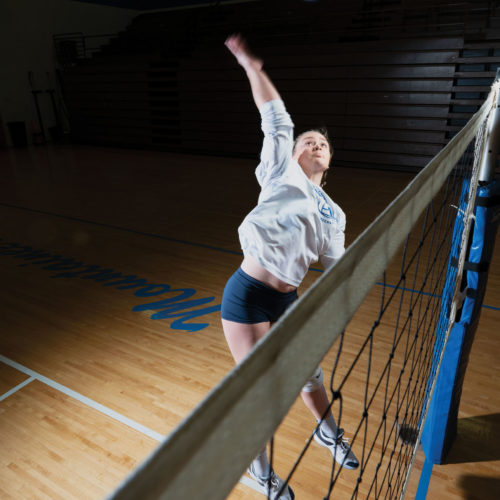
Procedure: Knee Surgery
Primary Physician: Dr. Panzarella
Facility: Sentara Martha Jefferson
During my junior year of high school, an on-court collision with a volleyball teammate resulted in a serious knee injury. The top half of my leg went one way, and the bottom half went the other. I couldn’t put weight on my leg or straighten it.
The X-rays revealed I had dislocated my knee and torn my medial patellofemoral ligament (MPFL), which, the doctors told me, is located on the inside of the knee and holds the kneecap in place. I also had damaged the cartilage under my kneecap.
I saw Dr. Matthew Panzarella, an orthopedic surgeon at Sentara Martha Jefferson for treatment. He was very nice and welcoming, and he gave me a lot of information about my knee and the injury, and how he was going to treat it. I knew I could trust him with fixing my knee.
Dr. Panzarella did reconstructive surgery to replace the injured MPFL with part of my hamstring tendon. This stabilized my knee, he said, and would help prevent future joint damage.
Following the procedure, I had four months of physical therapy to strengthen the knee. I also used an electrical muscle stimulator at home to stimulate the nerve muscles in my quadriceps and help me move again. Dr. Panzarella told me that rehab is super important in cases like mine.
The injury and my recovery have helped push me to be my best on the volleyball court. After struggling to get playing time in previous seasons, I was a team captain at Madison County High School during my senior year and helped lead our team all the way to the state semifinals. I earned first-team all-district and all-region honors, first-team all-Central Virginia honors, and second-team all-state honors.
In the fall of 2020, I’ll be playing volleyball at Franciscan University in Steubenville, Ohio, where I plan to major in nursing.
I feel my experience is a true comeback story. Even though I had this injury, it made me come back stronger and get that position on the court. I’ve grown a lot from this experience, and I can’t thank Dr. Panzarella enough for everything he did for me.
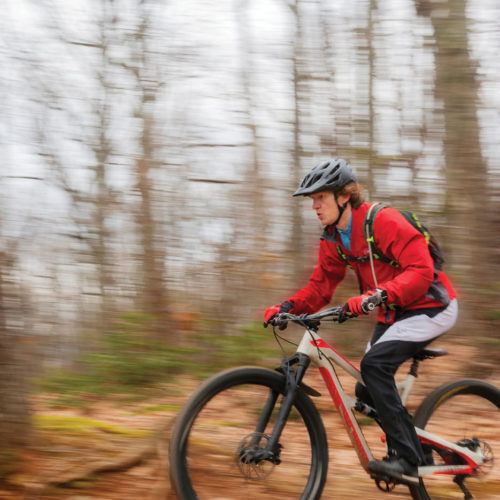
Procedure: Shoulder Surgery
Primary Physician: Dr. Gunther
Facility: Sentara Martha Jefferson
I’ve always enjoyed challenging myself physically with a wide range of outdoor activities like mountain biking, kayaking and backpacking.
In April 2018, I took my new mountain bike out on some rough terrain with a friend at Observatory Hill in Charlottesville. While attempting to jump the bike over a rock, I suddenly flew over the handlebars and landed on my right shoulder. I felt a crack in my collarbone that brought severe, sharp pain. After a long hike back to my truck, I went to the Sentara Martha Jefferson Emergency Department to get an X-ray, which confirmed my suspicion, My collarbone was fractured in multiple places and severely displaced.
As a nursing supervisor who has worked at Sentara Martha Jefferson for 11 years, I searched for treatment options that would allow me to return to the outdoor activities I enjoy so much. I met with Sentara Martha Jefferson orthopedic shoulder and sports surgeon Stephen Gunther, MD, who recommended surgery.
Using a highly technical minimally invasive procedure, Dr. Gunther inserted a titanium rod inside the shoulder bone. The procedure realigned the fractured fragments, stabilized the bone and allowed full healing.
I had the procedure at Sentara’s Outpatient Surgery Center at Pantops. The experience went really well. The nurses were fantastic. I know some of them, and they were all interested in why I was their patient!
Following surgery, I had to keep my right shoulder in a sling to reduce movement and promote healing. It was hard not being able to exercise or cook and prepare meals—in fact, not doing much at all with my right side.
Five months after surgery, Dr. Gunther cleared me so I could return to my favorite activities. To celebrate, I whitewater rafting in West Virginia, and also returned to mountain biking.
Cycling and kayaking are integral to my life and my happiness. It was amazing to get back on the bike and continue to do things I like. Dr. Gunther is an excellent surgeon who gave me straightforward answers, and the outcomes have been nothing but amazing.

Procedure: Broken Foot
Primary Physician: Dr. Degnan
Facility: Sentara Martha Jefferson
I twisted my foot and was having trouble walking. I iced it and elevated it for two days but finally relented and went to the MJ ER. They x-rayed it, diagnosed that a bone was broken, and referred me to Ortho-West and Dr. Gregory Degnan.
Dr. Degnan was outstanding. He explained exactly what as broken, even showing me the x-ray and explained the appropriate treatment, which included wearing a boot 24/7. He was very practical yet realistic and took as much time as I needed. He encouraged me to keep very active so that I did not get the "Dwindles!" I understood immediately.
My next appointment was a month later. The bone had healed so I would not have to wear the boot 24/7 but he told me what to expect, which included soreness for quite some time as the area around the bone was traumatized.
It is now two months since my injury and I no longer need the boot and am walking two miles every morning. While there is still soreness, it is decreasing every week. I am very appreciative!
Procedure: Shoulder Surgery
Facility: Sentara RMH
After several delays, not due to the orthopedic staff, I had what is commonly called rotator cuff surgery on August 1, 2019. After the nerve block wore off, I had one day of incredible pain but was off opioids in 12 days. I made a rapid recovery with physical therapy and several checkups.
By mid-September, I was able to drive to Frederick, MD, on one trip, and then to Washington, DC, for another meeting. I also began sorting and packing for an intended move to the Roanoke area. I made weekly house hunting day trips, but COVID-19 set in before I was able to make the move.
Thanks to my doctor and two other physical therapists, and hard work at home, I was also able to return to my previous level of swimming laps by mid-October, 2 weeks earlier than I had anticipated completing therapy. Thanks so much to all who played a part in giving me my life back!
Procedure: Shoulder Surgery
Primary Physician: Dr. Gunther
Facility: Sentara Martha Jefferson
I was experiencing shoulder pain in my right shoulder. Dr. Keller got me an appointment to see Dr. Gunther who operated on my shoulder and repaired my rotator cuff. Following rehab and therapy, my shoulder feels great!

Procedure: Painful Hip
Primary Physician: Dr. Swanson
Facility: Sentara Martha Jefferson
I just want to report how pleased I was with Dr. Swanson's cares and with her team. She replaced my hip; I was playing Pickleball in 8 weeks. Now, some 6 months later, I'm 120%.
